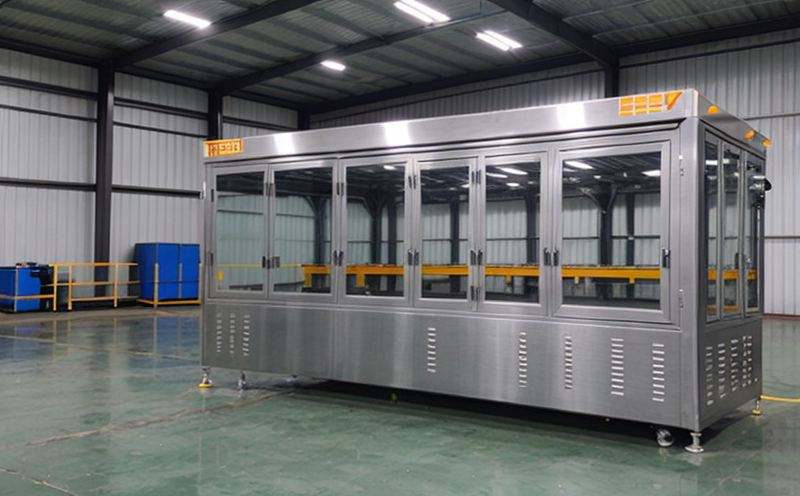Metal Packaging Testing
The testing of metal packaging is a critical component in ensuring product safety and quality. Metal packaging, including cans, aerosol containers, and drums, plays an essential role in the food, beverage, pharmaceutical, and chemical industries due to its ability to protect contents from external factors such as light, moisture, oxygen, and microorganisms.
Testing metal packaging involves a series of rigorous procedures designed to evaluate various properties that ensure the product's integrity. These tests are necessary to meet regulatory requirements and industry standards, ensuring consumer safety and maintaining brand reputation. The testing process is aimed at identifying any potential weaknesses in the design or manufacturing process before reaching the market.
Some key aspects tested include:
- Mechanical strength
- Hermetic sealing
- Corrosion resistance
- Leak detection
- Impact and drop tests
- Pressure testing
- Bulk density measurement
- Weight loss analysis
Testing methods are based on international standards such as ISO 11607, ASTM F88, and EN 12973. These standards provide a framework for consistent and reliable testing across different regions and industries.
The choice of test method depends on the type of metal packaging being evaluated. For instance, cans are tested using hydraulic pressure testing to ensure that they can withstand internal or external pressures without compromising their integrity. Similarly, aerosol containers are subjected to burst tests to assess their durability under extreme conditions.
During the testing process, it is crucial to follow strict specimen preparation guidelines. This includes ensuring that the packaging has been handled in a controlled environment and that any necessary modifications have been made prior to testing. The results of these tests provide valuable insights into the performance characteristics of the metal packaging, which are essential for quality control and product development.
Why It Matters
The importance of metal packaging testing cannot be overstated in today's competitive market. Consumers expect products to be safe, reliable, and of high quality. A single defective can or aerosol container could lead to significant financial losses due to recalls or product liability claims. Moreover, non-compliance with regulatory standards can result in fines and damage to brand reputation.
Testing metal packaging also helps companies stay ahead of industry trends. By identifying potential issues early on, companies can make informed decisions about design changes or material substitutions. This proactive approach not only enhances product safety but also contributes to sustainability efforts by minimizing waste and reducing environmental impact.
The global market for metal packaging testing services is expected to grow steadily over the next few years due to increasing demand from developing economies and changing consumer preferences. As more countries adopt stringent regulations regarding food safety and environmental protection, the need for reliable testing will continue to rise.
Why Choose This Test
Choosing metal packaging testing is not just about meeting regulatory requirements; it's also about enhancing product quality and maintaining a strong brand image. By investing in thorough testing, companies can build trust with their customers and ensure long-term success.
- Promotes Safety: Ensures that the packaging does not pose any risks to consumers.
- Enhances Brand Reputation: Demonstrates commitment to quality and safety standards.
- Achieves Regulatory Compliance: Meets international and local regulations for metal packaging.
- Improves Product Quality: Identifies areas for improvement in design and manufacturing processes.
- Sustains Environmentally Friendly Practices: Minimizes waste and reduces the environmental impact of packaging materials.
Investing in metal packaging testing provides numerous benefits that go beyond mere compliance. It helps companies gain a competitive edge by delivering products that are safe, reliable, and environmentally friendly.
Competitive Advantage and Market Impact
- Innovation Leadership: Continuous improvement in test methods ensures that companies stay at the forefront of industry innovation.
- Cost Efficiency: Early identification of defects reduces the need for costly recalls and repairs later on.
- Customer Satisfaction: Consistent high-quality products lead to increased customer satisfaction and loyalty.
- Market Differentiation: Superior testing capabilities differentiate companies from their competitors, attracting more customers.
The market impact of robust metal packaging testing extends beyond individual companies. It contributes to the overall safety and quality of consumer goods, fostering trust in the industry as a whole. By adhering to strict testing protocols, companies play a crucial role in maintaining public confidence in packaged products.





